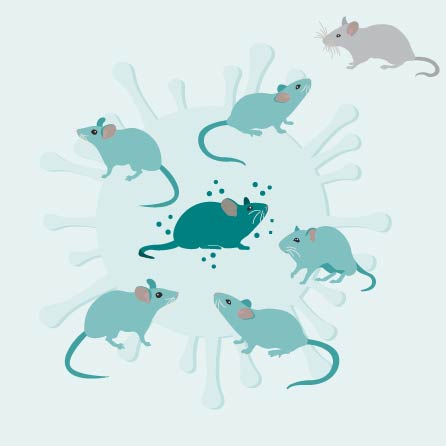U of I Research on
Transmissable Vaccines
Published in SCIENCE
April 30, 2024University of Idaho researcher Scott Nuismer (Biological Sciences) published in the leading peer-reviewed research journal, SCIENCE. "Developing Transmissible Vaccines for Animal Infectious Diseases" was co-authored by fellow U of I researchers James Bull (Biological Sciences), Chris Remien (Mathematics and Statistical Sciences) and Courtney Schreiner (M.S. ’22, Bioinformatics and Computational Biology). This paper emerged from a collaborative workshop organized by Nuismer and his collaborator Daniel Streicker from the University of Glasgow. Funded by a grant from the National Science Foundation's Division of Environmental Biology (DEB) Core (Grant No. 2216790), this workshop convened virologists, immunologists, mathematicians, ecologists, evolutionary biologists and sociologists to develop recommendations for the safe and effective development of transmissible vaccines.

The group's recommendations, outlined in the paper, offer clear guidance for engineering transmissible vaccines (TVs) that maintain efficacy while prioritizing safety. This workshop builds upon eight years of research from the Nuismer lab, which has focused on developing a mathematical framework to guide the development of TVs.
In recent decades, viral zoonoses have increasingly made headlines, from pandemic infections like Ebola, H1N1, SARS and COVID-19 to more routine infections such as rabies and hantaviruses. These spillover infections from wildlife to domesticated animals and humans impose a significant burden on public health, wildlife conservation and animal welfare. Conventional vaccination methods struggle to reach wildlife populations at a scale necessary to halt disease spread. Introducing transmissible vaccines, capable of autonomously spreading through wildlife populations via infectious processes, presents a promising approach to reduce the risk of infection spillover.
However, the development and deployment of transmissible vaccines raise numerous technical and regulatory concerns, as they involve modifying viruses and deploying them to wildlife populations. Nuismer and his colleagues propose a series of strategies to address these concerns. For instance, viruses used in TV development must meet specific eligibility criteria to minimize the risk of harmful phenotype evolution or cross-species transfer. Vaccines should undergo staged development processes with defined checkpoints to enable early identification and containment of emergent risks. TVs will necessitate shared international responsibility and compliance with local, national and international regulations. Moreover, distinct regulatory considerations must guide the deployment of a biological agent intended to spread through natural populations. These strategies foster open dialogue about TV development, emphasizing accountability and transparency in the hopes of TVs contributing to the future of public health.
The publication is authored by Daniel G. Streicker, Megan E. Griffiths, Rustom Antia, Laura Bergner, Peter Bowman, Maria Vitoria dos Santos de Moraes, Kevin Esvelt, Mike Famulare, Amy Gilbert, Biao He, Michael A. Jarvis, David A. Kennedy, Jennifer Kuzma, Carolyne Nasimiyu Wanyonyi, Christopher Remien, Tonie Rocke, Kyle Rosenke, Courtney Schreiner, Justin Sheen, David Simons, Ivet A. Yordanova, James J. Bull and Scott L. Nuismer. Find the full article in Science 384, 275-277 (2024), DOI:10.1126/science.adn3231.
by Michelle Reagan
IIDS Scientific Communications and Design Specialist